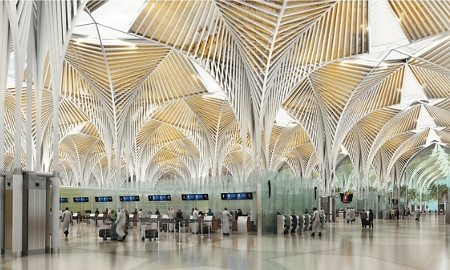Buoyed by significant long-term revenues from its exports of oil and natural gas, Saudi Arabia has invested heavily in all aspects of the country’s infrastructure – from roads, railways, ports and airports to telecom, electricity and water-supply networks, as well as hospitals, schools and universities.
As a result, Saudi Arabia’s infrastructure sector is currently among the world’s most dynamic, with ongoing improvements – especially to transport hubs – making the country even more accessible to the rest of the globe.
Today, the country offers investors the high-capacity, high-quality infrastructure needed to help businesses grow. Saudi Arabia’s more than 34,000 miles of paved roads link all parts of the kingdom, ensuring the efficient movement of natural resources, raw materials, products and people.
In recent years, the Saudi government has launched a massive $624 billion investment program for infrastructure and industrial projects through to 2020.
A total of 17.9 million passengers were handled in 2010 at King Abdulaziz International Airport (KAIA), the country’s busiest airport. It is also the second-busiest airport in the Persian Gulf based on passenger traffic volumes. As well as serving the commercial center of Jeddah 12 miles to the south, millions of pilgrims traveling to the Islamic holy cities of Makkah and Madinah pass through its Hajj Terminal every year. A massive upgrade plan is currently under way at the airport that will add new terminal buildings, a high-speed rail link and boost capacity.
Three years of major rehabilitation, expansion and development works began last year at Madinah’s Prince Mohammad Bin Abdulaziz International Airport. According to one o f the developers, TAV Construction, the “design of the new terminal building, inspired by the Hejazi architecture, emphasizes the concept of an elegant, modular structure with space as the main object.”
Also among the country’s top civil construction developments under way are the new economic cities that are now rising from the desert. Created to spur growth away from the traditional centers of Riyadh, Dammam and Makkah, they aim to spark the economic synergies that underpin diversification away from energy. The flagship projects include the King Abdullah Economic City (KAEC) between Jeddah and Rabigh; the Knowledge Economic City (KEC) in Madinah; the Prince Abdulaziz Bin Mousaed Economic City (PABMEC) near Ha’il; and the Jazan Economic City (JEC) in the south, close to the Yemeni border.
According to the government, by 2020 the impact of the Economic Cities will include $150 billion contributed to GDP growth, 1.3 million jobs created, and the accommodation of 4.8 million people.

0 COMMENTS